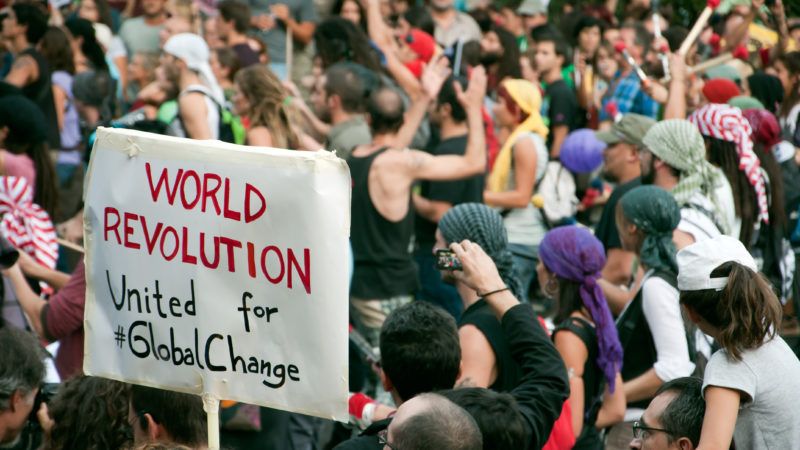California County Will Allow...
California County Will Allow Outdoor Social Gatherings of 12 People—
and
Outdoor Protests of 100 People
The phased reopenings happening around the country are becoming increasingly arbitrary.

(Vicente Rubio/Dreamstime.com)
The country's local lockdown orders are slowly easing up, but in an often arbitrary manner.
Take Contra Costa County, California. On June 2, the Bay Area county's Health Services department issued an updated shelter-in-place order that limited outdoor social gatherings to 12 people from the same "social bubble" but rescinded a mass gathering ban to allow for political protests of up to 100 people. This version of the order maintained a prohibition on outdoor religious gatherings.
"I know there's a lot of frustration out there, but it's important to keep in mind that interventions like social distancing have saved lives," said Chris Farnitano, the county's health officer, in a press release.
A subsequent order issued Friday allows for outdoor religious services and cultural ceremonies of up to 100 people. As with protests, these services and ceremonies are expected to maintain physical distancing between participants. Unlike protests, the organizers of worship services and cultural ceremonies have to keep a list of attendees for up to 14 days.
Yet Friday's order still restricts social gatherings to 12-person social bubbles. These bubbles are defined as a stable group of 12 people that are part of either a Household Support Unit, a Childcare Unit, or a Children's Extracurricular Activity Unit. All three types of units have separate definitions laid out in the health order's appendix.
These 12-person social bubbles are not required to abide by social distancing requirements, but bubble members over the age of 12 are still encouraged to maintain six feet of physical distance from each other and to wear face coverings.
Outdoor dining is now also permitted in Friday's order, although that too comes with a number of social distancing guidelines.
All this falls within state guidelines. On May 25, California allowed counties to permit in-person protests, funerals, and religious services (inside and out) of up to 100 people. It's still up to county health departments to implement these guidelines. Contra Costa County has lifted its restriction on protests and religious services, but it still maintains a prohibition on funeral services of more than 10 people.
The county's reopening schedule, and the voluminous details that accompany it, are rather arbitrary and not particularly realistic. It doesn't make much sense from a public health perspective to ban outdoor gatherings of a 13-person "social bubble" while allowing a crowd of 100 strangers. It's true the latter has to comply with social distancing requirements, but anyone who's been to a protest knows that that's not always going to happen.
One could argue that political protests and religious services raise particular First Amendment concerns and therefore can't be held to the same strict guidelines as other activities. But if that's the case, the county might as well just ditch all its restrictions, given that people are going to go to protests of a bunch of strangers and then go interact with their social bubble.
I think county officials are also overestimating their ability to set the parameters of people's social interaction. It's doubtful many in Contra Costa are going to read through a 17-page public health order and its six separate appendices to figure what exactly is allowed at their barbeque.
At least the arbitrariness of the county's reopening schedule doesn't appear to be politicized in the way a lot of public health discourse has recently. Both New York Mayor Bill de Blasio and New Jersey Gov. Phil Murphy have said explicitly that violating mass gathering bans is OK if the gatherings are to protest police violence and racism. That's a position apparently held by a number of public health officials too.
Yet the more distinctions and caveats public health officials and politicians add to their stay-at-home orders, the less credibility they have, and the less they'll likely be listened to by a public that is ready to get back to some sort of pre-pandemic normality.




Post a Comment